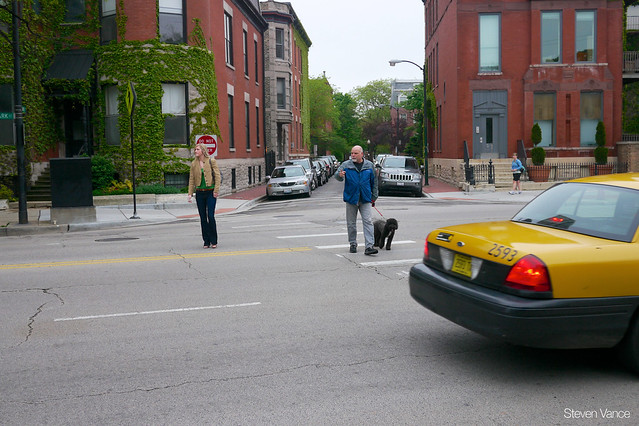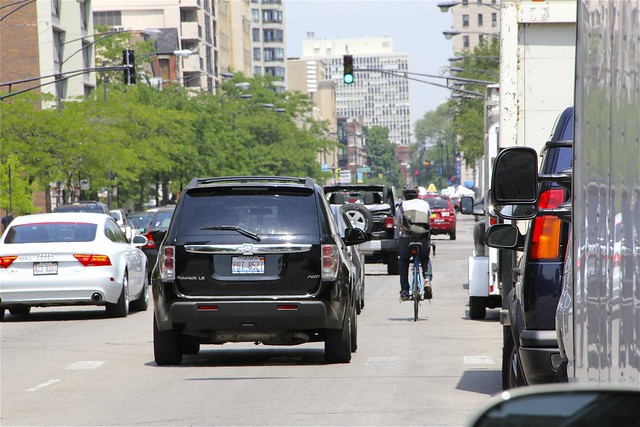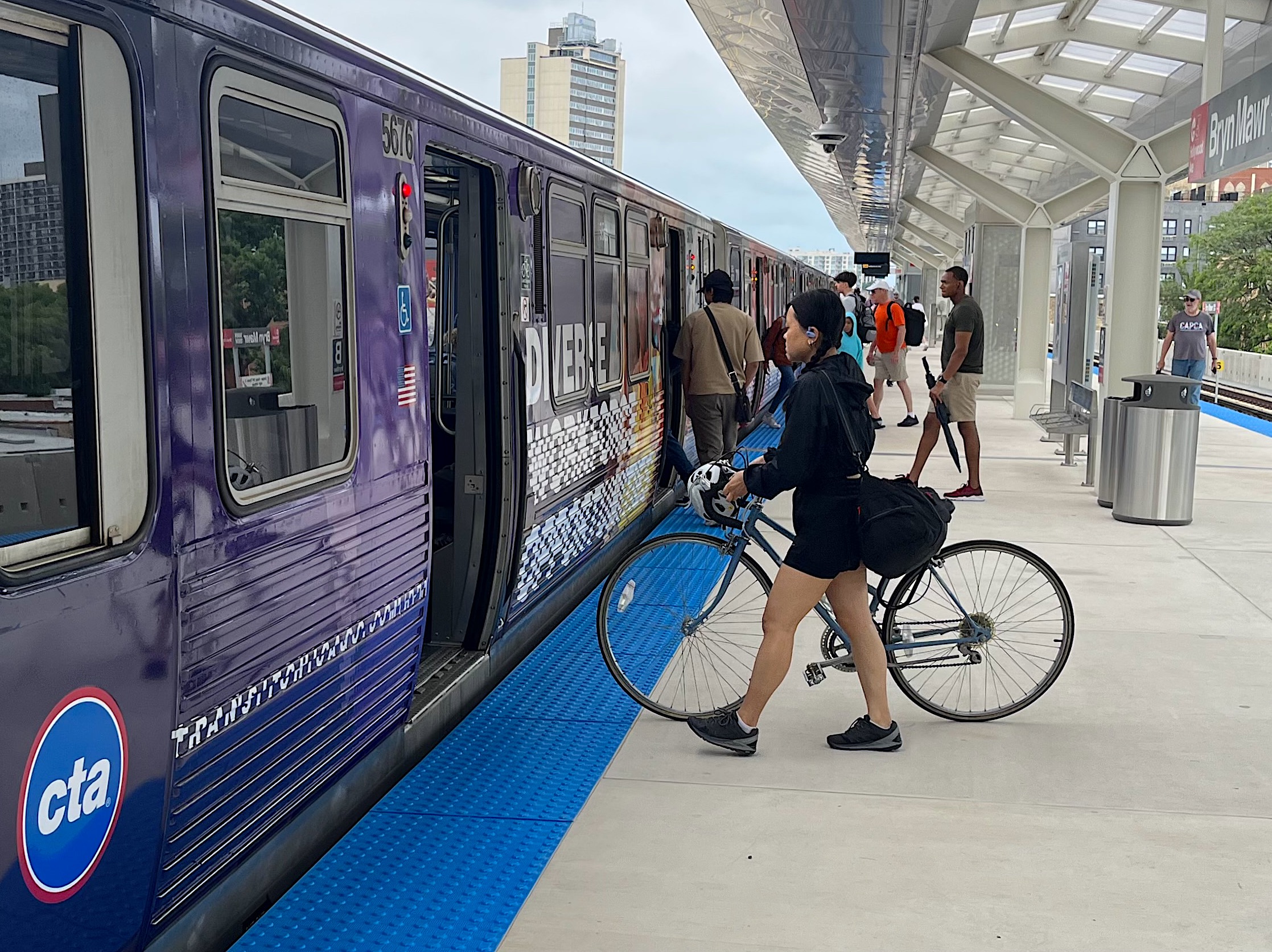The safety problems on Clark Street between North Avenue and Lincoln Park West are well known. The roadway is too wide, leading too many drivers to speed. Back in 2011, Bike Walk Lincoln Park co-organizer Michelle Stenzel wrote that Clark Street needs a road diet:
A motorist heading northbound suddenly notices between the Chicago History Museum and the Moody Church that there are now four lanes for moving traffic, plus additional lanes on either side for loading. This wide-open feel is an invitation to step on the gas, and usually, the driver does.
Sometimes the vehicle is "caught" at the red light at LaSalle Drive. But after that, it's hit the gas again. Now there are four wide lanes for moving traffic, no median, and no marked bike lane. There is a pedestrian crosswalk at Menomonee, but given the speeds taken and the width of the street, motorists barely take notice.
Last May, I measured drivers' speeds for two hours at different locations along Clark Street and found rampant disregard for the 30 mph speed limit on the wider parts of the street.
Thankfully, there's a good opportunity to tame speeding traffic on Clark. Later this month, Active Transportation Alliance's Brenna Conway will lead a community workshop, according to Karl Anderson, constituent services liaison in the alderman's office, to try to "figure out the what the issues are, figure out how to improve access to Lincoln Park [the park], and calm traffic." Bike Walk Lincoln Park has proposed a host of improvements, including a road diet, but so far nothing official has been proposed yet. "We're trying to make this a community event, develop a marketplace of ideas," said Anderson. "There's no plan set."
Stenzel told me that she plans to attend the meeting, but just as a resident. "I'm not even going to bring the proposal," she said. "This is going to be a grassroots type of thing. We're trying to get bicyclists who commute past here, and invite businesses to attend, to point out where crosswalks sucks, where we need new ones, bicycling concerns, and even park things, like the lack of benches in certain areas." The meeting is tentatively scheduled for August 20, from 6:30 to 8:30 p.m., where Green City Market sets up.
In case you need any further encouragement to help make Clark Street safer, here's a look at the speeding data I gathered at four locations last year, using a speed gun for 30 minutes at each site.
Southbound Clark Street at Germania Place (two lanes wide)
There's a pedestrian crossing island at this spot that greatly narrows the effective width of the travel lane, making this a safer location. Of 151 vehicles measured, not a single one exceeded the speed limit, though several reached the speed limit. The average speed was 17.2 MPH.
Northbound Clark Street at Menomenee Street (four lanes wide)
This is where things get hairy. Of 121 cars measured, 53.72 percent exceeded the speed limit. The maximum speed was 50 mph (see video above) and the average speed was 30.8 mph. There is a crosswalk here, but it's 66 feet long, and there's rarely a safe break in traffic. This is the only marked crosswalk between signalized intersections -- a distance of almost 1,000 feet -- and a huge number of people are walking here to get to Lincoln Park.
Northbound Clark Street at Lincoln Park West (four lanes wide, narrowing to two lanes)
Clark Street splits here, with one lane going north on Lincoln Park West and one lane continuing northwest on Clark Street. There's a concrete traffic island here to separate the lanes. Of 58 drivers whose speed I measured, 27.6 percent exceeded the speed limit, and the average speed was 25.6 mph. The maximum recorded speed was 40 mph.
Northbound Clark Street between Lincoln Park West and Dickens Avenue (two lanes wide)
This is the second narrowest location (after Germania Place) and of 58 cars measured, only 2.4 percent exceeded the 30 mph speed limit, with the average speed being 22.5 mph and the maximum being 35 mph.
You can tell from the data that the people drive faster on the wider sections of the street, as Bike Walk Lincoln Park has also observed. Where Clark Street narrows, the number of drivers speeding drops along with the average speed. With the right plan, speeding could be tamed on the rest of Clark Street too.







